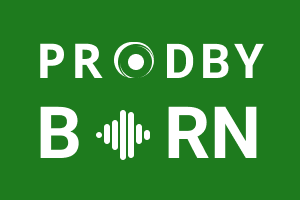Introduction to Music Theory
Music theory is a system of principles and rules that govern the creation, structure, and interpretation of music. It encompasses various elements such as melody, harmony, rhythm, form, and dynamics. By studying music theory, you can develop a deeper understanding of the language of music and communicate their ideas more effectively.
Scales
Scales form the basis of melody and provide a set of notes that create a specific tonal framework. A scale is a sequence of pitches arranged in ascending or descending order. For example, the C major scale comprises the notes C, D, E, F, G, A, and B. Let's delve deeper into the C scales in music production below.
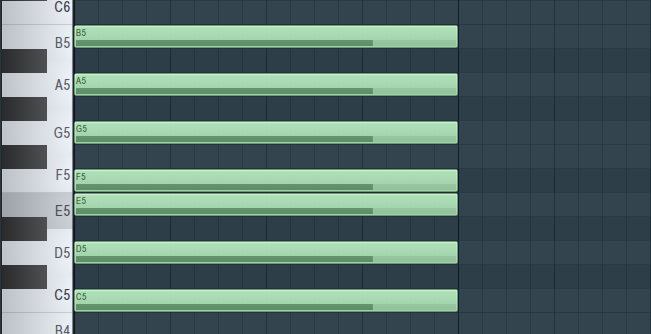
See below for the C Minor scale.
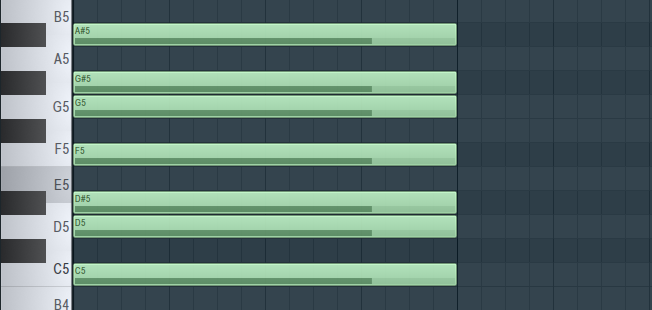
Below, discover the C major pentatonic scale.
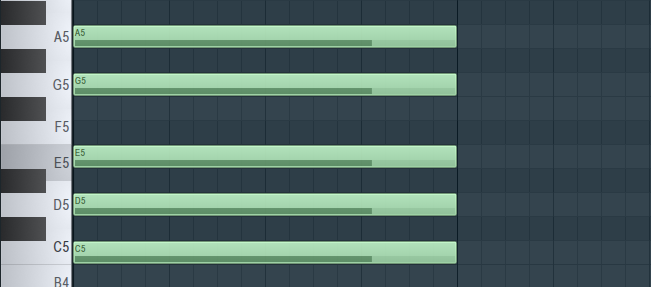
Explore the C Minor harmonic scale further down.
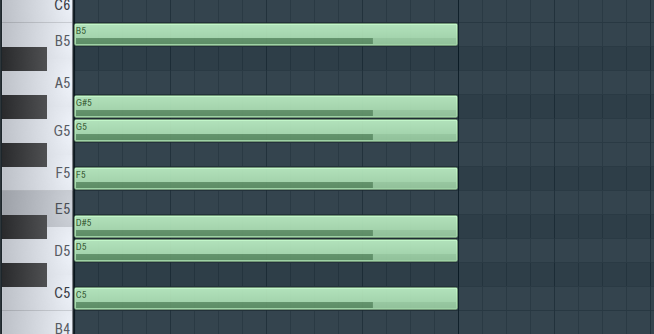
Uncover the C Minor Hungarian scale below.
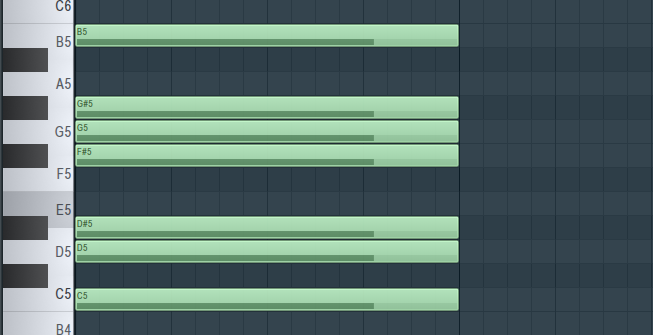
Dive into the C Minor Melodic scale just ahead.
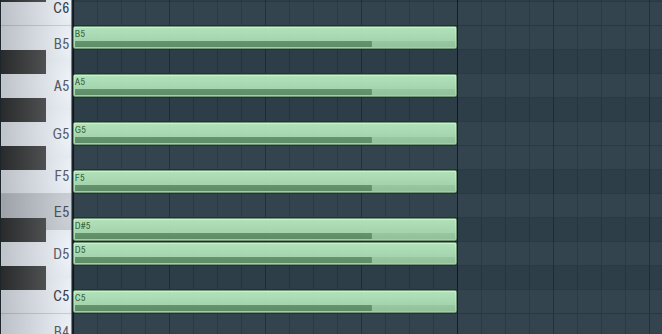
Check out the C Minor Pentatonic scale below.
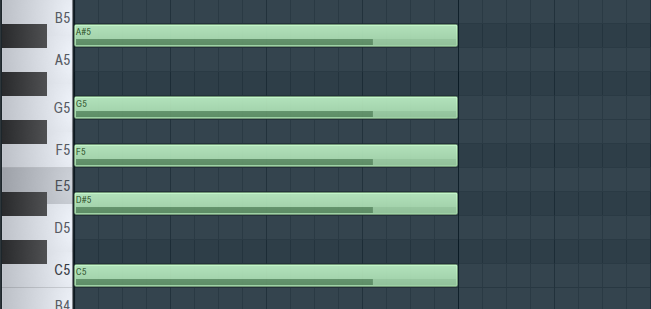
To sum up, a scale is a bunch of notes that work well together and create a certain mood. Now, here's the cool part: when you use these notes in a melody, it gives your music a special flavor😎. Scales are like the secret sauce that makes your tunes catchy and interesting.
Think of scales as a series of notes played in a particular order. They create a specific musical sound or mood. Playing these notes in order gives you a scale. You use scales to build melodies and harmonies, because they are kind of like the ingredients to cook up a song. So, scales are like the musical alphabet that helps you create the sounds you want in your music.
Modes
Modes are derived from scales and offer different tonal colors and moods. They use the same set of pitches as a parent scale but start on a different note, known as the tonic. The most common modes include the Ionian mode (major scale), Dorian, Phrygian, Lydian, Mixolydian, Aeolian (natural minor scale), and Locrian. Each mode has a unique character and is often associated with specific genres or musical styles.
So let's take for example some modes in music production.
See below for the Aeolian mode (natural minor scale):
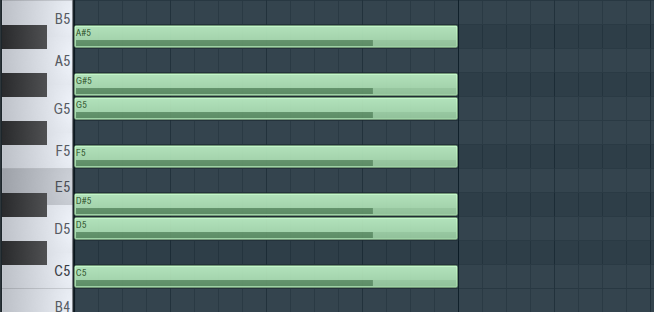
Discover the Dorian Mode below:

Unveil the Lydian Mode below:
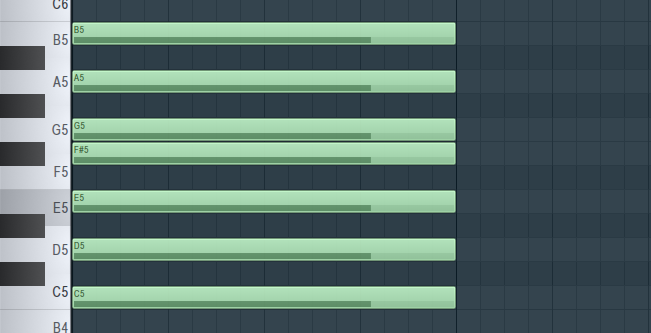
Explore the Mixolydian Mode below:
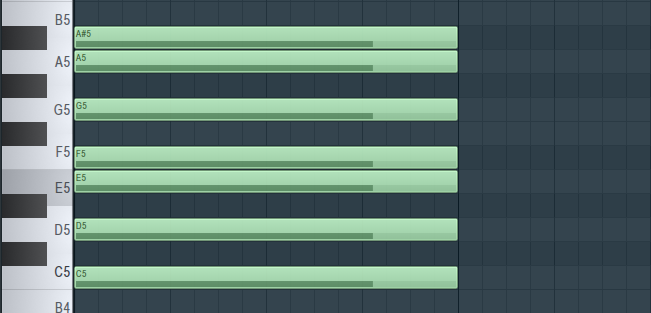
Journey into the Locrian Mode below:
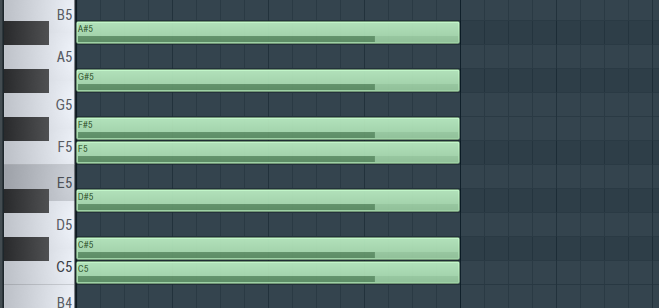
Embark on the Phrygian Mode below:
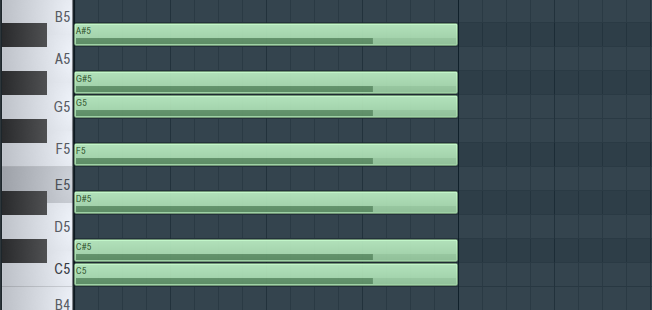
In simple words: Modes are like different flavors of a musical scale. Imagine you have a set of notes, and by starting on a different note within that set, you get a new vibe or mood – that's a mode! Each mode has its own unique character, creating distinct sounds and feelings in your music.
Think of it like using the same ingredients but arranging them in a way that brings out different tastes😜. Modes add variety and color to your compositions, allowing you to evoke specific emotions or styles.
Chords
You can create chords by playing multiple notes simultaneously. They provide the harmonic foundation of music, adding depth, richness, and emotional impact. Chords are built by stacking specific intervals, typically in thirds, on top of a root note. The most basic chord is the triad, consisting of three notes: the root, the third (which determines if the chord is major or minor), and the fifth. For example, a C major triad comprises the notes C, E, and G.
So here is a tip: To create interesting chords start with the bass notes first which will serve as the low end foundation for the chord.
See below: The bass notes

And here is how the bass notes sound:
So let's take for example a triad chord and how we can extend it with a set of extra notes to make it sound thicker and have a fuller feel building up from the bass notes.
From the bass notes, we play the same notes as the bass notes in two octaves up from the bass notes as in the picture below:
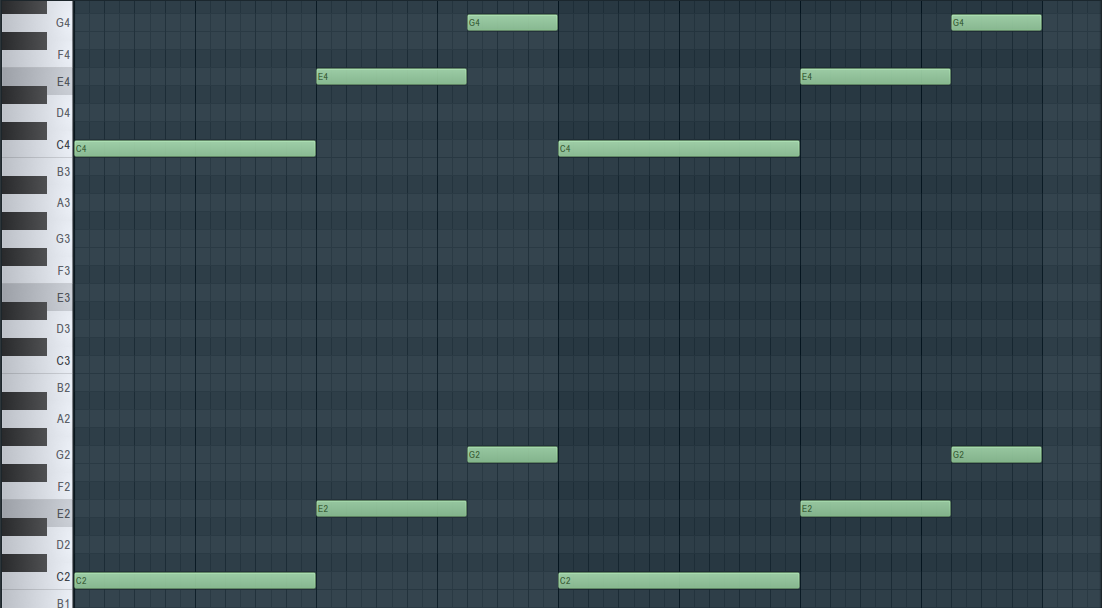
Now the bass notes coupled together with the other notes two octaves above would typically sound like below:
In the image below we have a simple triad chord:
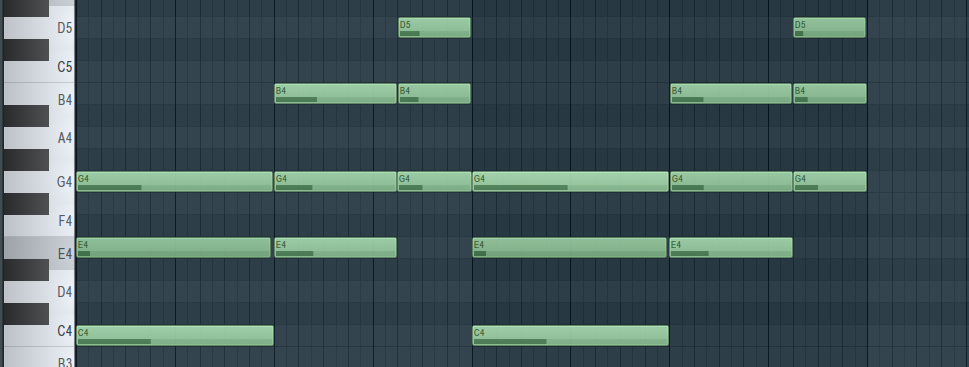
Now the triad would typically sound like below:
In the image below we have the simple triad chord layered with bass notes from a lower octave:
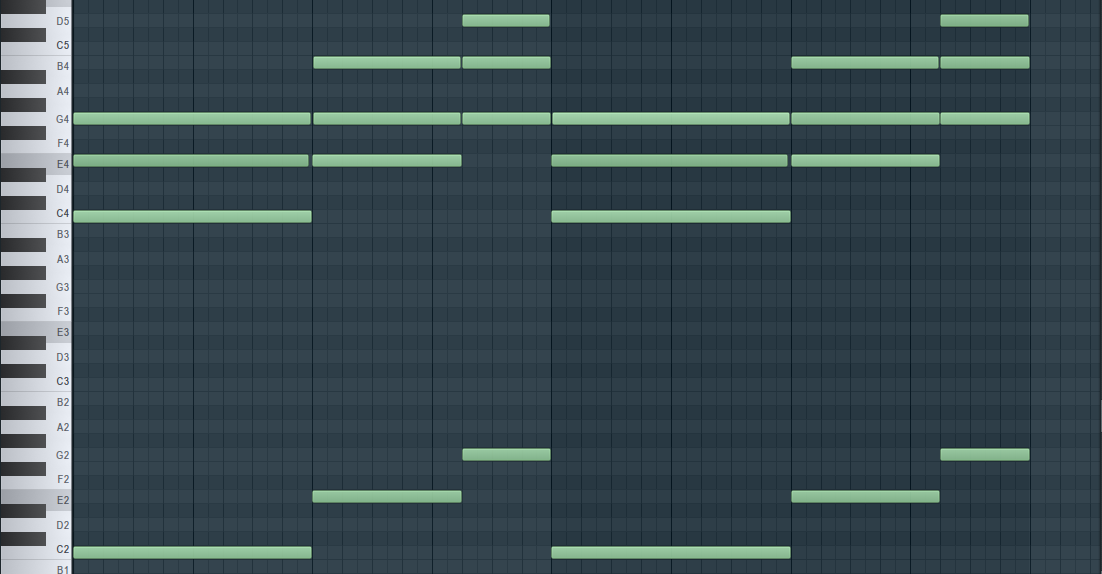
Now the triad with the bass notes together would sound like:
In the image below we have a simple triad chord. However, the note E of the triad chord has been transposed an octave up:

Now the triad chords with the E note transposed an octave higher would typically sound like below:
In the image below we have a simple triad chord. However, the note E of the triad chord has been transposed an octave up and layered with bass notes from a lower octave:
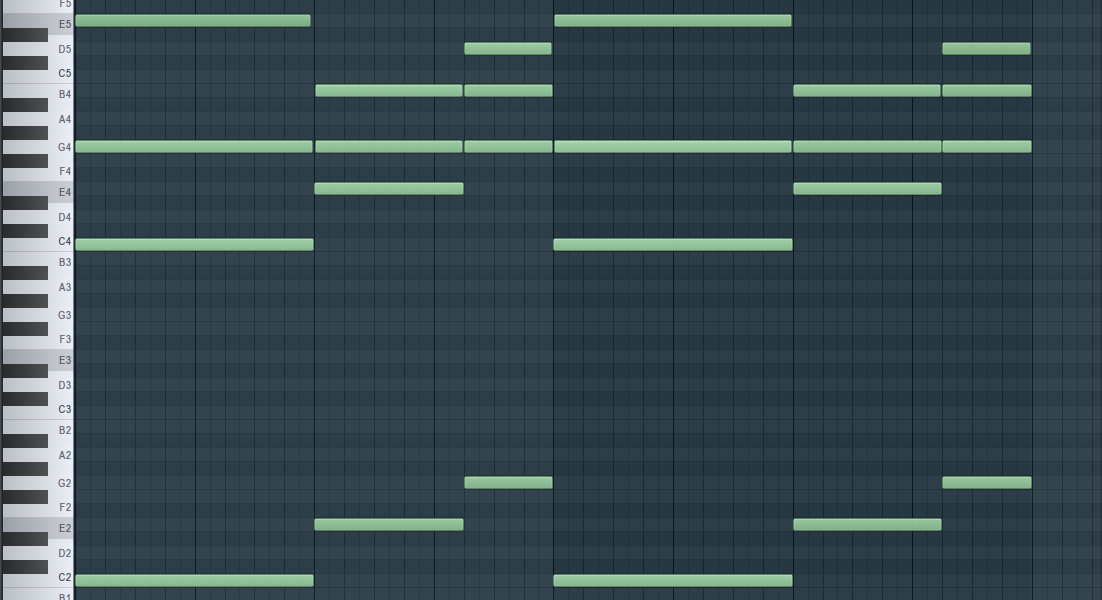
Now the triad with the transposed note and the bass notes together would sound like:
Chords are like musical combinations of notes played together. When you stack certain notes on top of each other, it creates a harmony that sounds pleasing to the ear. It's like putting different colors together to make a beautiful painting.
Imagine chords as musical buddies - a group of notes hanging out together. When you play them at the same time, it creates this magical harmony that feels just right. Each chord has its own vibe, like happy😊, sad😔, or mysterious🤔. It's like picking colors for your feelings but with music.
Chord Progressions
Chord progressions are sequences of chords that form the harmonic structure of a piece of music. They establish tension and release, creating a sense of movement and emotional impact. Common progressions, such as the I-IV-V progression in major keys or the i-iv-V progression in minor keys, are frequently used in various genres. Understanding chord progressions enables you to compose melodies that fit harmonically and evoke the desired emotions😉.
In the image below we have the chord progression made up of all the chords arranged in a particular manner:
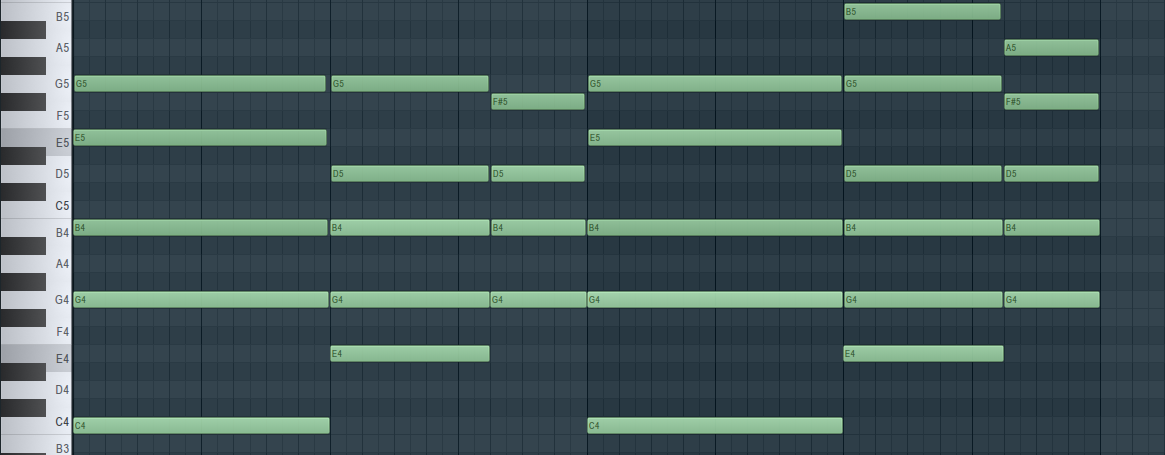
In the image below we have the chord progression made up of all the chords arranged in a particular manner layered up with bass notes:
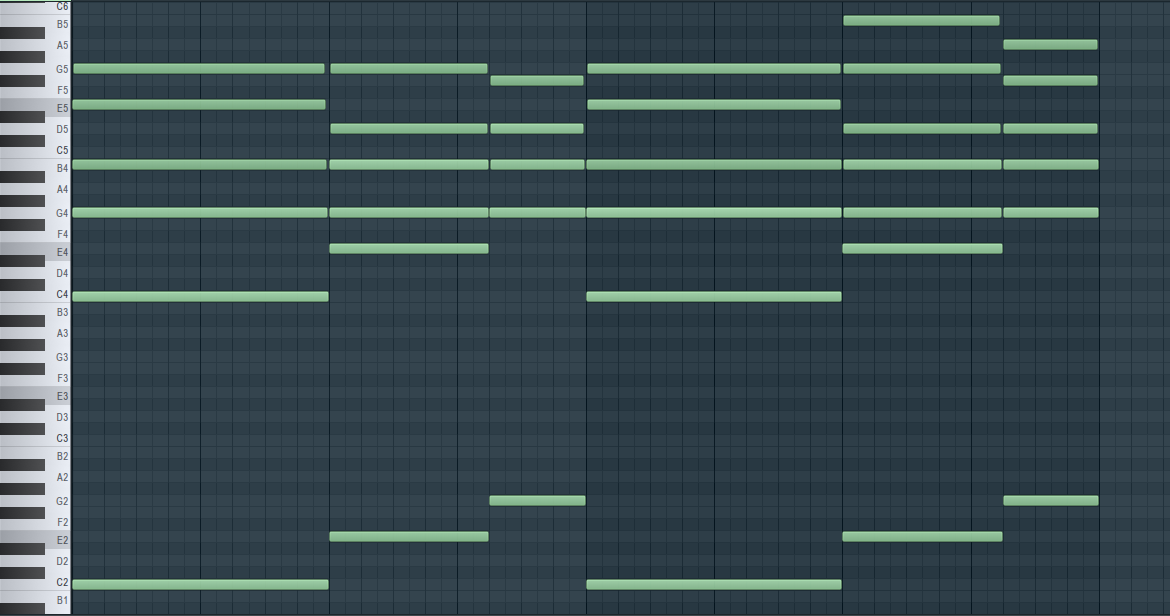
For example, this particular progression would sound like:
Now, chord progressions are like storytelling with chords. It's the sequence of these chord combinations that gives your music a journey - a beginning, middle, and end. Each chord in the progression has a unique role, creating tension, excitement, and resolution. It's like taking your listener on a musical adventure.
Roman Numeral Analysis
Roman numeral analysis is a system used to analyze and describe the relationships between chords within a key. It assigns a Roman numeral to each chord, indicating its position in the key's scale. The Roman numerals represent the degree of the scale on which the chord is built. For example, in the key of C major, the C major chord is represented by the Roman numeral I, the D minor chord by ii, the E minor chord by iii, and so on. Roman numeral analysis helps musicians identify common patterns and chord relationships across different keys.
Imagine Roman Numeral Analysis as a musical map🍳. Each chord in a song gets a Roman numeral based on its role in the scale. It's like giving each character in a story a specific role. These numerals tell you where each chord fits in the musical journey, making it easier to understand and navigate.
Harmonic Progressions
Harmonic progressions refer to the sequence of chords in a piece of music. Different progressions evoke distinct emotions and contribute to the overall mood of the composition. Some common progressions include the I-IV-V progression (also known as the "three-chord trick"), the ii-V-I progression, and the circle of fifths progression. By studying harmonic progressions, musicians can create compelling and engaging musical journeys.
Now, Harmonic Progressions are the exciting twists and turns in your musical story🎵. It's the sequence of chords that shape the mood and direction of your song. Picture it like the plot unfolding - the tension, the resolution, and everything in between. By studying harmonic progressions, you become the architect of emotional landscapes in your music.
Extensions and Alterations
Beyond basic triads, chords can be extended or altered to add color and complexity to a composition. Extensions involve adding additional notes beyond the basic triad, such as the seventh, ninth, eleventh, or thirteenth. Alterations modify the basic chord tones by raising or lowering certain intervals. Common alterations include the sharp or flat fifth (augmented or diminished), sharp or flat ninth, and sharp or flat thirteenth. These extensions and alterations contribute to the richness and sophistication of harmonies.
So let's take for example of how we extend a triad and make it sound fuller.
In the image below we have a simple triad chord:

Now the triad chords would sound like below:
In the image below we invert the middle note E and transpose it an octave up:

Now the triad chords with E note inverted an octave up would sound like below:
In the image below we then add the notes B in the first chord and D in the second chord:

Now the triad chords with E note transposed and we add the notes B in the first chord and D in the second chord:
We then add the notes G in the first chord of the first part and F# in the second chord of the first part, and we do the same for the chords in the second part and also with an addition of the notes B and A at the end.
We also play the chords in different velocities and also the notes are not exactly played at the same time but usually have a humanized offset and small imperfections to give the chords and melodies a human touch🎶.
In the image below we have the complete chord which has a more fuller feel:
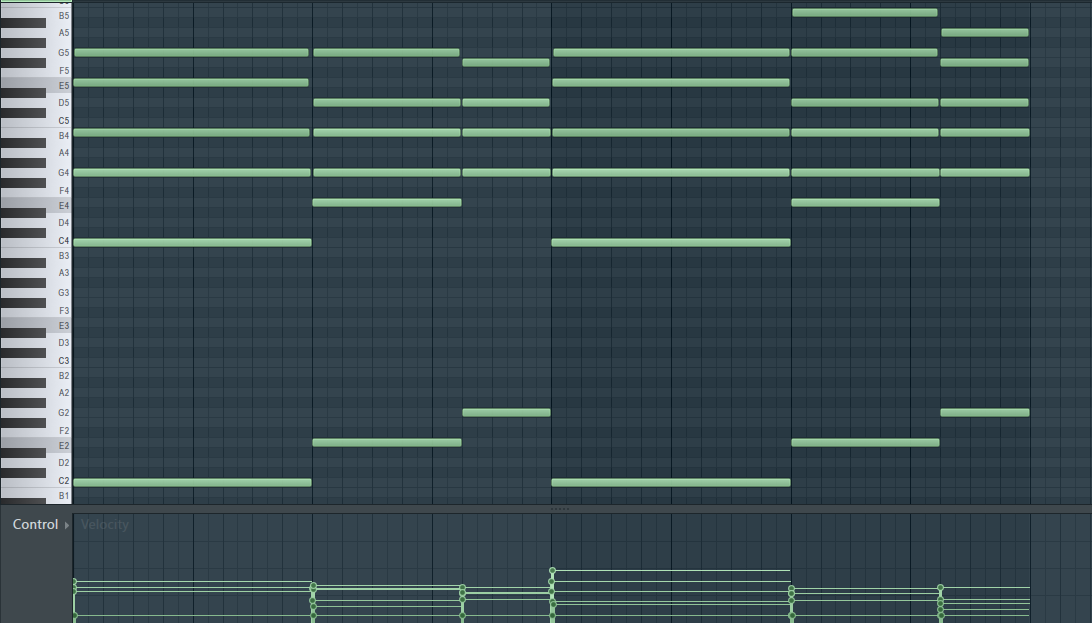
Now the triad chords with E note transposed and we add the notes B in the first chord and D in the second chord:
To sum it up, extensions in music are like sprinkling magic on your chords!✨ Imagine you have your basic chord, and then you add these extra notes, like the seventh, ninth, eleventh, or even the thirteenth - it's like giving your chords a VIP treatment! These extra notes bring a whole new color and flavor to your music, making it richer and more exciting. It's like adding secret ingredients to your recipe to create a dish that's uniquely yours! 🎨. So, next time you're playing around with chords, don't be afraid to throw in some extensions. They're like the confetti on your musical celebration - making your tunes pop and sparkle!

